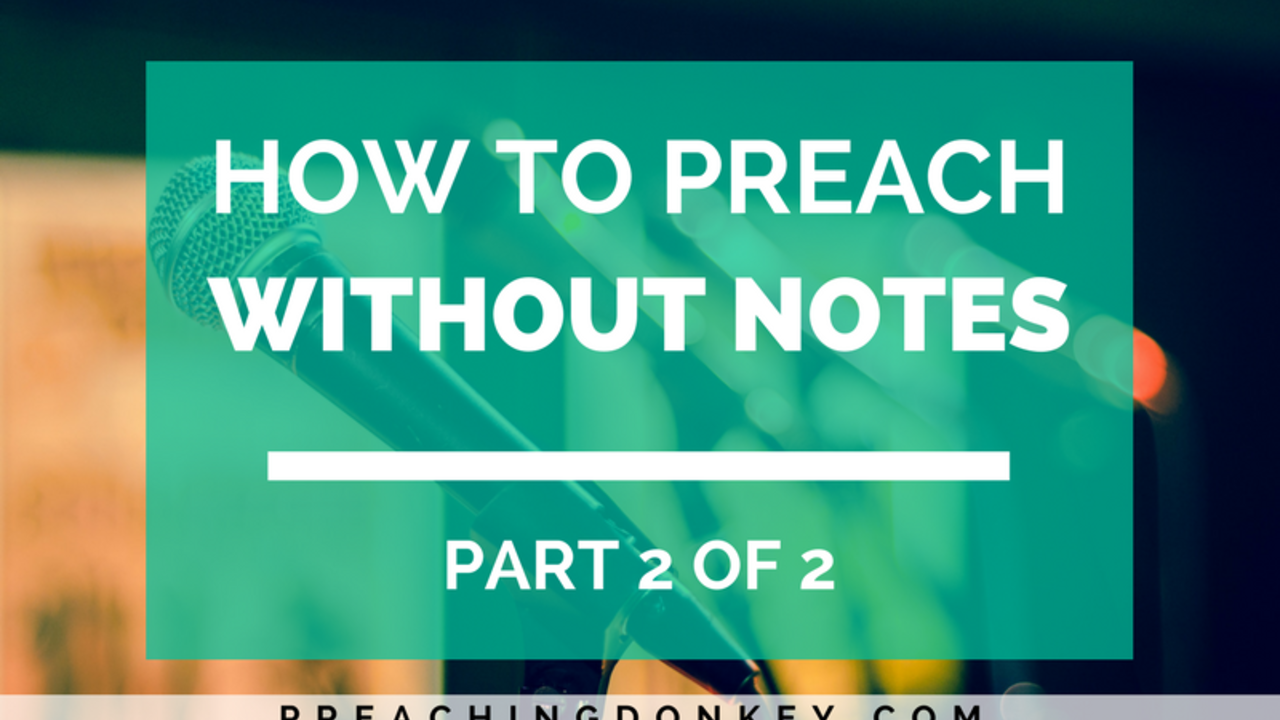How to Preach Without Notes – Part 2 of 2

In Part 1 of this series we dove into the first two steps of training ourselves how to preach without notes.
My desire to preach without notes started with this question: What if I could train myself to not need notes at all? What if I could prepare in such a way that I could deliver a message and never look down, but maintain eye contact and physical engagement with my listeners from start to finish? What if you could, too?
So I began training myself not to use notes, and I am sharing what I’ve discovered with you. The first two steps are to reduce the amount of notes you allow yourself and build a flow of triggers and touch points. You can read more in Part 1 of this series. For today, let’s look at the next two steps to preaching without notes:
3. Rehearse and internalize your message
The next step is to take that one page with your touch points and triggers and rehearse. In my post, Preach what You Practice: Why Rehearsing Is Essential To Great Sermon Delivery I make the argument for rehearsing, out loud, every message you deliver. You can take a look at it to understand why it’s so important.
But for our purposes, you can’t preach without notes if the message is not in you. The way the message gets in you is by internalizing it. This is different than memorizing it. Memorization is what you do when you cram for a test. Internalization is when the touch points of the sermon, the important ideas you want to communicate, are burned into your heart and mind. This allows you to let what is inside of you come out rather than just trying to memorize what you wrote down.
When you lose track or forget, the triggers come in handy. They help you remember your flow and stay on point. This all comes from internalizing which happens most effectively when you rehearse. This leads to the fourth and final step.
4. Use your presentation slides to your advantage
Remember early I said that you want to avoid diverting your attention to something that your audience can’t also see? Here’s what I mean by that. If I have a piece of paper on stage with me and I look down to read it, I’m looking away from my audience and onto a something else. This provides an opportunity for my audience to disengage with me and my content.
But what if I could bring my audience’s attention to a Scripture or key idea that we read together? What I’m referring to is the screen which is nothing new. But I want to give some suggestions on how to make the most out of it. First, consider using a TV on stage with you. I have used a TV on stage with me for years after seeing Andy Stanley pioneer this idea several years ago. What this allows me to do is draw my listeners’ attention to the the idea as we read it together. Because it is a TV right next to me they don’t have to divert attention away from me to see it. Some, however, depending on the size of the room will be watching on the big screens, but they’ll still see the same thing: me engaging a Scripture, idea or concept with them. (If you want to know how to set this up, this TV Cart is a great one to use!)
This method allows me to still read ideas and concepts onstage but do it with the audience coming along for the ride. But that’s not the best part. We have confidence monitors in our auditorium. A confidence monitor is just a fancy way of describing a screen that is pointed at the stage instead of at the audience. When I’m preaching only I can see the monitor. Using ProPresenter software, I can see my current slide and my next slide. So all I have to do if I get stuck is look up at the monitor and see what the next slide is before advancing to it. This serves as a trigger for that next touch point as I generally have each slide represent a major touch point I want to communicate. The beauty of this is the confidence monitors are placed in such a way that when I look at them it just looks like I’m looking at the audience.
Give it a try
The four steps in this series are how I have been able to move away from notes to a more engaging delivery. Give it a try. Tell me in the comments how it’s going. I’d love to help in any way I can. What methods do you use to move away from dependency on using notes?


